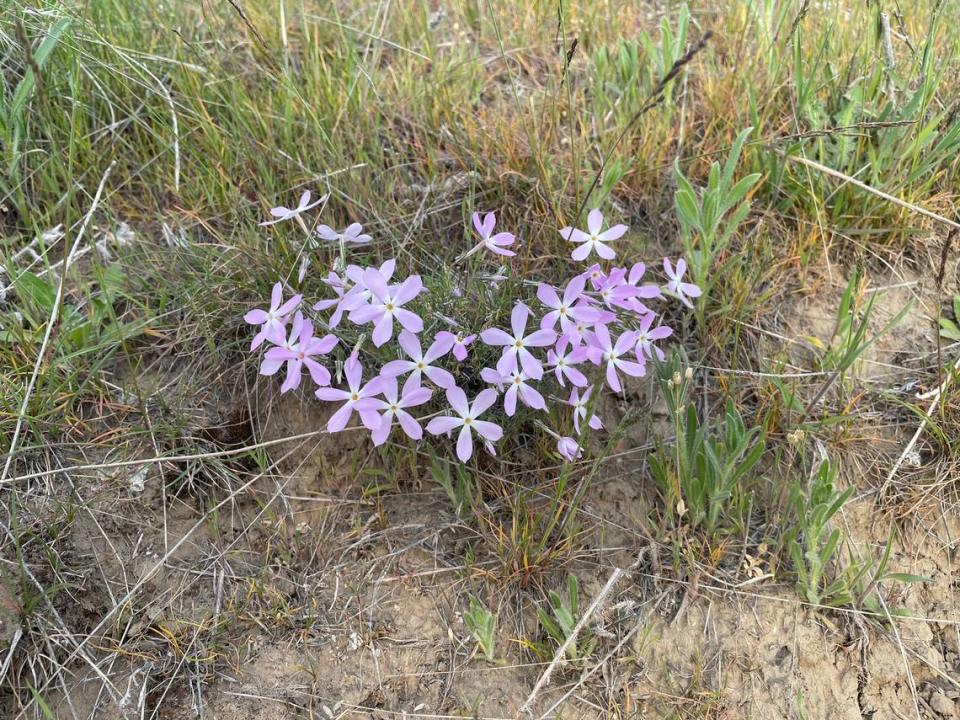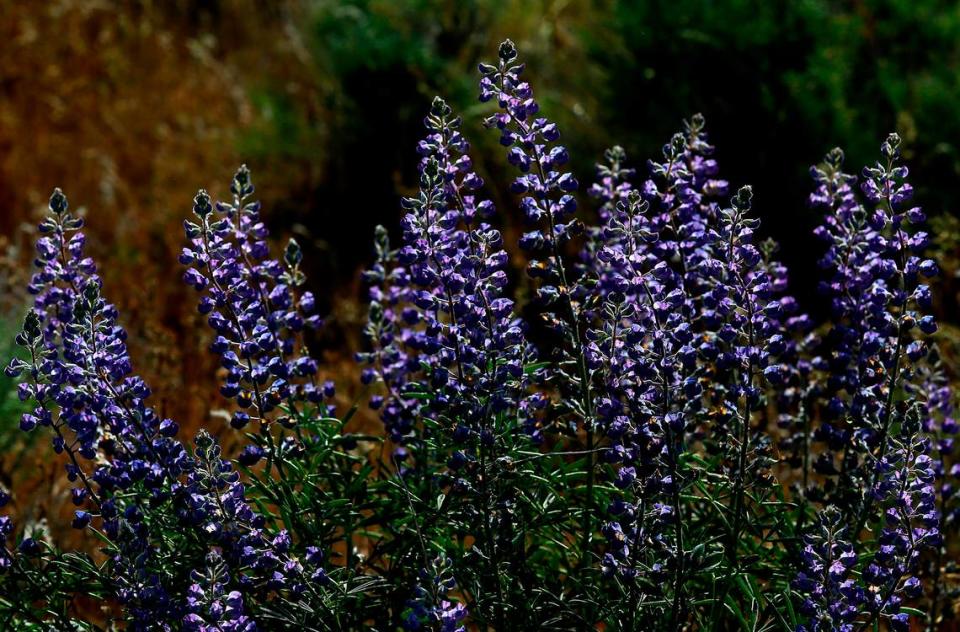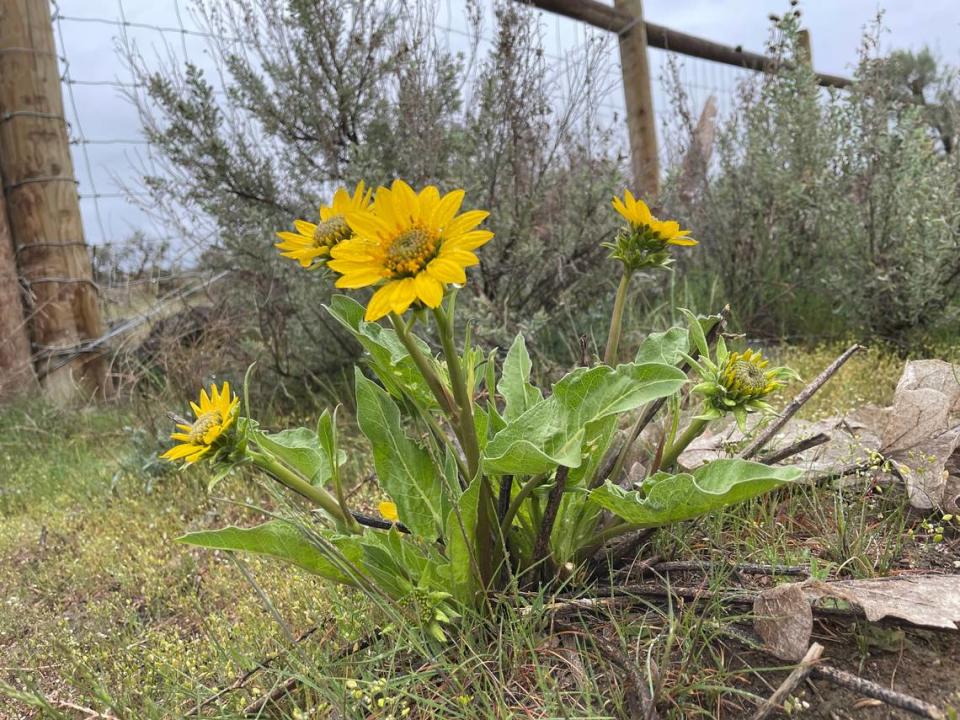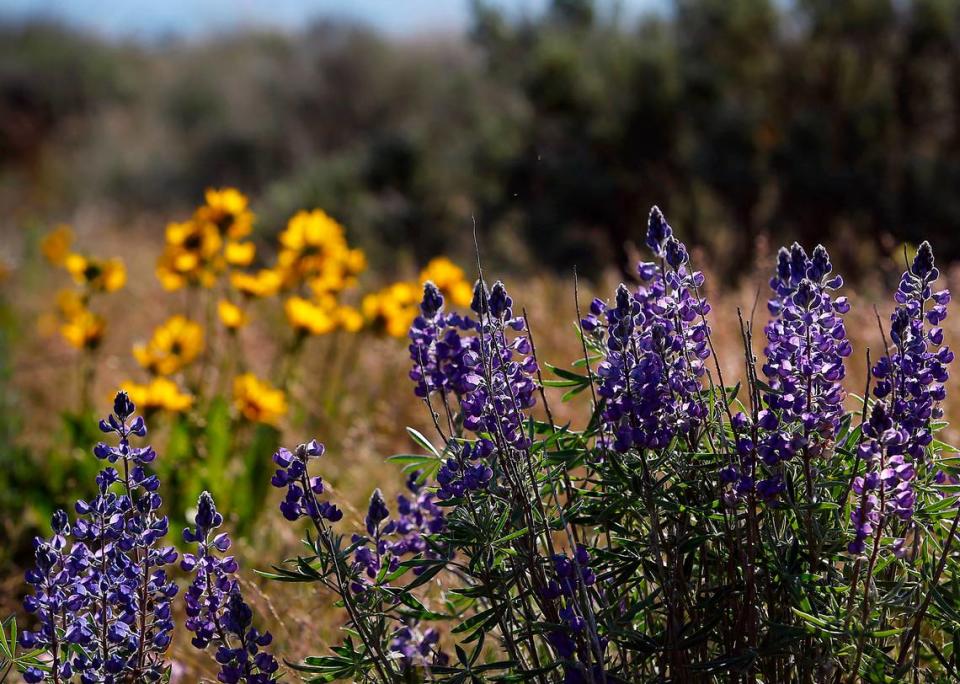Badger Mountain Superbloom. Why are there so many wildflowers in Eastern WA this spring?
With this year’s temperate winter, warm spring and abundant precipitation, it’s no surprise that Badger Mountain and other areas around the region are abloom with wildflowers.
Bright yellow balsamroot, stalks of purple lupine and clusters of baby pink phlox are part of the Mid-Columbia superbloom on the hillsides in all directions.

Kelsey Kelmel, co-chair of the Columbia Basin Chapter of the Washington Plant Society, said the level of precipitation in the Tri-Cities area this winter and spring could be one of the biggest factors.
Normally, the Mid-Columbia area receives about 6 to 9 inches of annual precipitation.
This season, since the water year began on Oct. 1, 2023, the current total measures 5.11 inches, according to the National Weather Service.
“Our native plants’ strategy for dealing with the heat and drought of our region is to go dormant if there are not resources available,” says Kelmel. “Maybe these blooms have been smaller in previous years because of the temperature and amount of moisture that’s been available to them.”
“They’ve been there the whole time and the conditions are just right that they are really showing off this year,” she said.

She said we can expect the flowers to stick around into May.
This spring, Kelmel noticed that flowers also started to bloom earlier, which has implications for pollination.
“The native pollinators have these very specialized relationships with native plants in our area. The question is whether pollinator species are also on a similar timeline, or if they are going to wake up later and then not have a food source because those blooms are already spent,” she said.
Kelmel shared that other factors contributing to the sheer number of flowers include dormancy and overall maturity of flowers.
“The balsamroot is the yellow flower that is a native member of the sunflower family. It takes five to seven years for the balsamroot to bloom for the first time. So if you are seeing many heads on those flowers, those plants are probably at least 20 to 30 years old.”

Once the weather becomes hot and dry, plants go dormant, adapting to the precipitation and climate patterns of the area. “We get our second round of blooms in the fall — really in September and October — when the rabbitbrush and snow buckwheat start to bloom,” Kelmel said.
An abundance of blooming flowers not only draws hikers and outdoor adventurers, but also brings potential environmental impacts.

“What could possibly happen is that there is going to be a larger seed bank this year because there are more blooms,” Kelmel says.
“Hopefully, this is also building up that native seed bank in our soil, so that when the next big germination event happens, or when the conditions are just right for those seeds to emerge, they’ll be there.”
For other local scenic hikes, check out Horn Rapids Park, Candy Mountain and Rattlesnake Slope Wildlife Area.
She reminds community members not to pick wildflowers and to always stay on the trail.
Visit the Columbia Basin Chapter’s Places to Visit webpage for more information.


